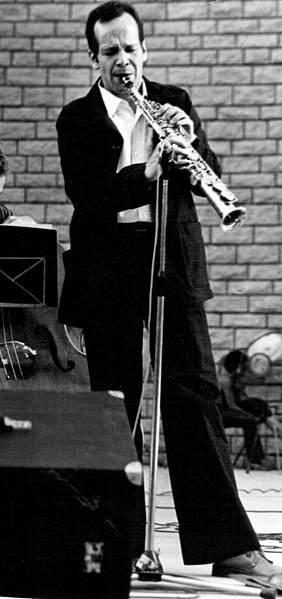Steve Lacy was an American jazz saxophonist and composer recognized as one of the important players of soprano saxophone. Coming to prominence in the 1950s as a progressive dixieland musician, Lacy went on to a long and prolific career. He worked extensively in experimental jazz and to a lesser extent in free improvisation, but Lacy's music was typically melodic and tightly-structured. Lacy also became a highly distinctive composer, with compositions often built out of little more than a single questioning phrase, repeated several times.
Lacy in 1976
The soprano saxophone is a higher-register variety of the saxophone, a woodwind instrument invented in the 1840s. The soprano is the third-smallest member of the saxophone family, which consists of the sopranissimo, sopranino, soprano, alto, tenor, baritone, bass, contrabass saxophone. Soprano saxophones are the smallest and thus highest-pitched saxophone in common use.
Soprano saxophone
Comparison in size of a curved B♭soprano saxophone (centre), an E♭alto saxophone (left), and a B♭tenor saxophone (right)
Top to bottom: a curved E♭sopranino saxophone, a straight E♭sopranino saxophone, a C soprano saxophone, and a B♭soprano saxophone
B♭soprano saxophone (left), C soprano saxophone (center), E♭sopranino saxophone (right)





